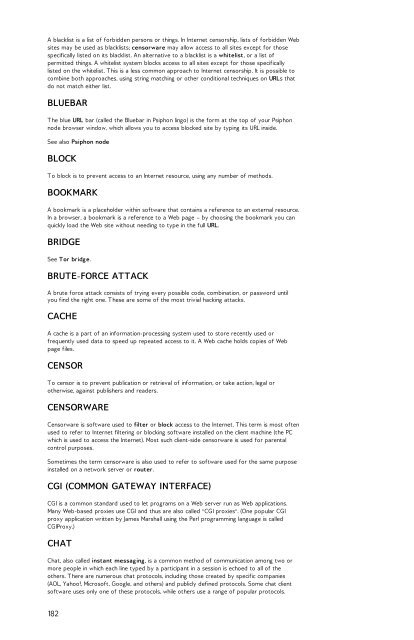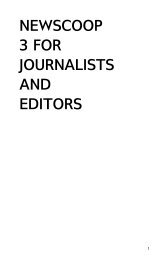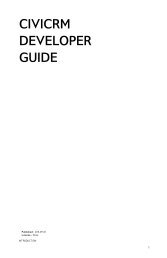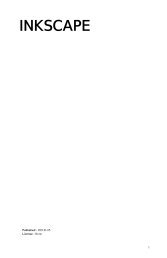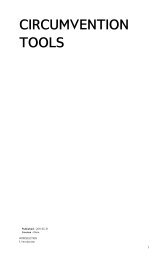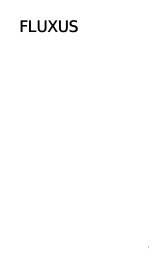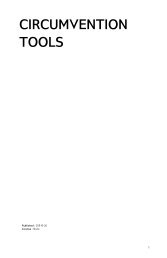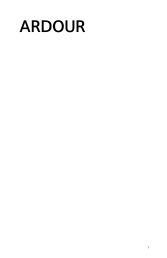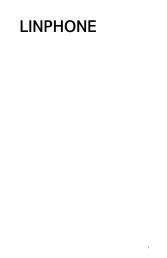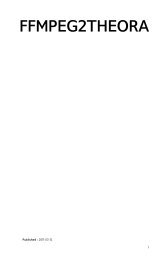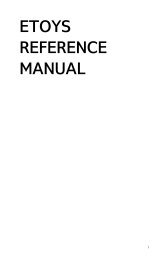CIRCUMVENTION TOOLS - FLOSS Manuals
CIRCUMVENTION TOOLS - FLOSS Manuals
CIRCUMVENTION TOOLS - FLOSS Manuals
You also want an ePaper? Increase the reach of your titles
YUMPU automatically turns print PDFs into web optimized ePapers that Google loves.
A blacklist is a list of forbidden persons or things. In Internet censorship, lists of forbidden Web<br />
sites may be used as blacklists; censorware may allow access to all sites except for those<br />
specifically listed on its blacklist. An alternative to a blacklist is a whitelist, or a list of<br />
permitted things. A whitelist system blocks access to all sites except for those specifically<br />
listed on the whitelist. T his is a less common approach to Internet censorship. It is possible to<br />
combine both approaches, using string matching or other conditional techniques on URLs that<br />
do not match either list.<br />
BLUEBAR<br />
T he blue URL bar (called the Bluebar in Psiphon lingo) is the form at the top of your Psiphon<br />
node browser window, which allows you to access blocked site by typing its URL inside.<br />
See also Psiphon node<br />
BLOCK<br />
T o block is to prevent access to an Internet resource, using any number of methods.<br />
BOOKMARK<br />
A bookmark is a placeholder within software that contains a reference to an external resource.<br />
In a browser, a bookmark is a reference to a Web page – by choosing the bookmark you can<br />
quickly load the Web site without needing to type in the full URL.<br />
BRIDGE<br />
See Tor bridge.<br />
BRUTE-FORCE ATTACK<br />
A brute force attack consists of trying every possible code, combination, or password until<br />
you find the right one. T hese are some of the most trivial hacking attacks.<br />
CACHE<br />
A cache is a part of an information-processing system used to store recently used or<br />
frequently used data to speed up repeated access to it. A Web cache holds copies of Web<br />
page files.<br />
CENSOR<br />
T o censor is to prevent publication or retrieval of information, or take action, legal or<br />
otherwise, against publishers and readers.<br />
CENSORWARE<br />
Censorware is software used to filter or block access to the Internet. T his term is most often<br />
used to refer to Internet filtering or blocking software installed on the client machine (the PC<br />
which is used to access the Internet). Most such client-side censorware is used for parental<br />
control purposes.<br />
Sometimes the term censorware is also used to refer to software used for the same purpose<br />
installed on a network server or router.<br />
CGI (COMMON GATEWAY INTERFACE)<br />
CGI is a common standard used to let programs on a Web server run as Web applications.<br />
Many Web-based proxies use CGI and thus are also called "CGI proxies". (One popular CGI<br />
proxy application written by James Marshall using the Perl programming language is called<br />
CGIProxy.)<br />
CHAT<br />
Chat, also called instant messaging, is a common method of communication among two or<br />
more people in which each line typed by a participant in a session is echoed to all of the<br />
others. T here are numerous chat protocols, including those created by specific companies<br />
(AOL, Yahoo!, Microsoft, Google, and others) and publicly defined protocols. Some chat client<br />
software uses only one of these protocols, while others use a range of popular protocols.<br />
182


